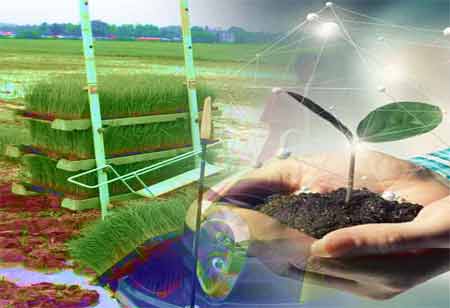Thank you for Subscribing to Agri Business Review Weekly Brief
How Can You Move Towards Sustainable Agriculture?
Transitioning to sustainable agriculture is a requirement, not a choice. With a growing population, climate change, and increased demand for natural resources, there is a dire need to implement sustainable agriculture techniques that protect the environment and enhance food security.

By
Agri Business Review | Monday, September 22, 2025
Stay ahead of the industry with exclusive feature stories on the top companies, expert insights and the latest news delivered straight to your inbox. Subscribe today.
Fremont, CA: The agriculture industry is crucial to the global economy. It employs a sizable fraction of the worldwide workforce and contributes to many countries' GDP. However, conventional agricultural techniques, such as excessive synthetic fertilizers and pesticides, monoculture, and large-scale commercial farming, have significantly impacted the environment, public health, and food security worldwide.
Sustainable agriculture provides an adequate answer to these issues. It paves the way for a more resilient, egalitarian, and environmentally sustainable food system that benefits the planet. Sustainable agriculture is more vital today than ever before. Climate change generates unpredictable weather patterns, more significant soil degradation, and diminishing groundwater levels, making it more demanding for farmers to produce enough food to support a rising population.
Simultaneously, conventional agricultural techniques exacerbate these issues by contributing to soil erosion, biodiversity loss, and water contamination. aThere is a critical need to expedite the global transition to sustainable agriculture techniques to solve these concerns. This may be achieved by:
Implementing Regenerative Practices and Nature-Based Solutions
Regenerative agriculture aims to improve soil health, biodiversity, and ecosystems' ability to store carbon. Conservation tillage, cover cropping, crop rotation, intercropping, and agroforestry are examples of methods included in this approach.
Applying Integrated Pest Management (IPM) Techniques
IPM employs several ways to control pests, illnesses, and weeds in the least harmful way to human health and the environment. These techniques may include biological controls, crop rotation, resistant cultivars, and cultural practices. IPM may minimize pesticide usage, increase agricultural yields, and safeguard natural ecosystems.
Adopting Agroforestry Practices
Agroforestry is the practice of incorporating trees and shrubs into agricultural settings. This strategy can potentially improve soil fertility, minimize erosion, promote biodiversity, and offer farmers alternative income streams by producing lumber, fruits, and other non-timber forest products.
According to a World Agroforestry Centre assessment, agroforestry has the potential to triple the productivity of degraded lands in India while also sequestering carbon in the soil and biomass.
Advancing Circularity in Agriculture
Circular agriculture is a closed-loop system designed to decrease waste, recycle nutrients, and replenish natural resources. Composting, cover cropping, and integrated livestock-crop systems can all help achieve this goal. By implementing circular agricultural methods, farmers may lessen their dependency on external inputs like synthetic fertilizers and pesticides. These methods also improve soil health and reduce waste.
Ensuring Predictability through Innovative Agri-Technologies
Weather forecasting, remote sensing, and predictive analytics are examples of innovative agricultural technology that assist farmers in anticipating weather patterns, pests and diseases, and market demand, allowing them to make more informed decisions and decrease risks.





